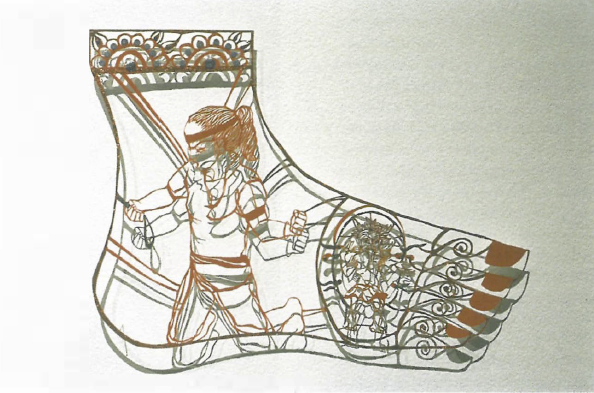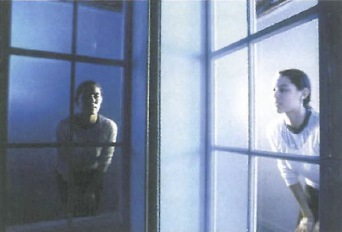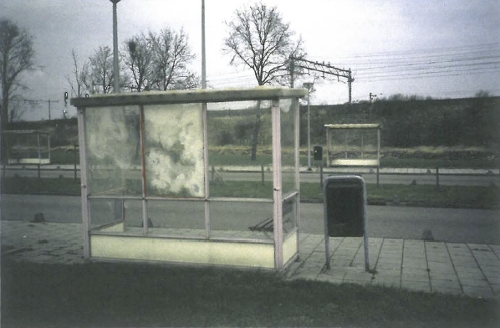
La primavera è qui! Spring is here! This year Primavera, an important showcase for up and coming young artists in Australia, marks its 13th anniversary. To help bring diversity and contrast, a different curator, usually from outside, is invited to curate the exhibition. The current curator, Vivienne Webb, is one of the permanent staff of the MCA.
Nine artists, from six cities in five states, were chosen based on the novel or challenging ways in which they work with materials. The selection draws together a variety of sculptures and installation, where everyday materials are used in very intriguing ways including umbrellas, a smashed-up photocopier, a half balsa wood and metal ladder, and mirrors. The artworks selected are simply amazing; however, three do stand out, simply through the clever use of materials and space.
Natasha Johns-Messenger's work, Picture This, is a fun work, for children at least. Isn't Luna Park just across the bridge? The viewer is faced with reflections in strategically placed mirrors which create a deceptive idea of where you are, so that you become 'lost' in it. Being site-specific it gives rise to a paradoxical relationship between real, representation and virtual space, by altering the vision of the viewer.
A totally different concept, Sangeeta Sandrasegar's complex work, Goddess of Flowers, uses strong directional light to cast a shadow on paper cut-outs, crucial elements in developing the meaning, which was inspired by the dramatic life of Phoolan Devi, India's infamous Bandit Queen. The complex and delicate traditional methods of making paper cut-outs, and the henna designs and imagery in the shape of bare feet and hands, (on which henna tattoos are applied for Indian weddings), relate equally to Devi's early marriage and her low social status.

Walking into another room, you are immersed in Sandra Selig's work and for a moment you may think Spiderman had been there. The installation stretched threads across the room, making a web-like structure and deals with the perception and human sensory experience of the viewer. Sometimes you see the threads, sometimes you don't. The structure seems solid, but can be permeable at other angles, creating a weightless form. Low sustained pulses and signals are also released into the room at intervals evoking a scanning and searching process, with viewers walking back and forth across the room acting like human scanning machines within a sea of threads. When combined, the pulses and threads mimic those of a sewing machine, where a consistent tension needs to be maintained. This work is a visually beautiful piece that engages the viewers and makes them an integral part of the piece.
Objects common to our daily lives are used to create other perceptions, for example Tim Sterling's use of milk crates, and pvi collective's use of umbrellas. Vivienne Webb has cleverly chosen a wide range of works using various types of materials. She has also juxtaposed artworks using different materials to create unusual or even ironic relationships between the artworks. For example, Huseyin Sami's use of fluidity in paint next to Nick Manga's use of solidity in balsa wood and glass.
The wall texts, being densely written, made understanding the underlying themes of the artworks more difficult and as the inherent nature of these engaging works does not demand that a viewer understand all their deeper levels of meaning without the texts it might have been easier to release the imagination. The exhibition lets the viewer become immersed and enjoy a truly innovative and thought-provoking showcase of Australia's emerging artists.
Primavera is fresh and new. Sadly, this show is more engaging and intriguing than the whole of the Biennale of Sydney, which was exhibited at the MCA just before this exhibition. With many still feeling disappointed by the Biennale (or should it be called the Banal of Sydney?), Primavera is an exhibition that took one to another dimension.












